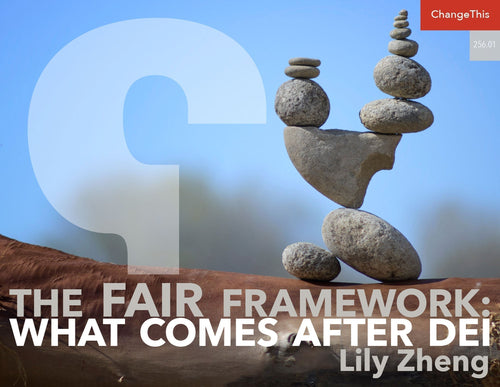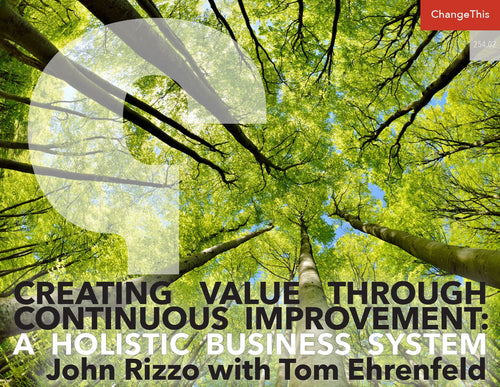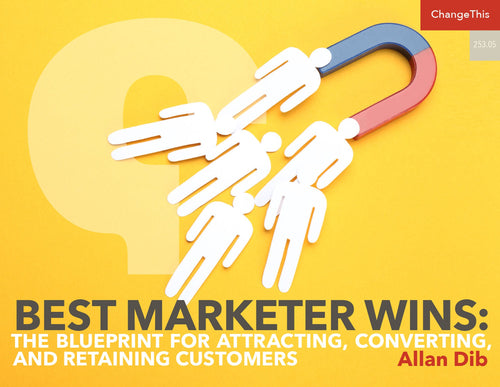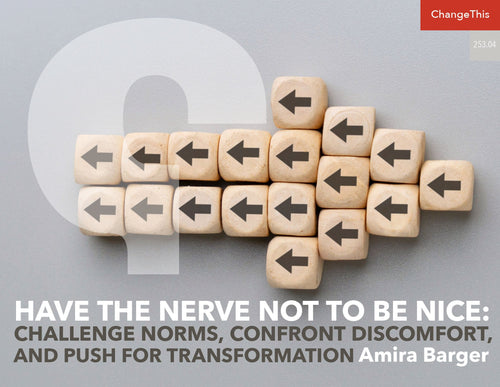The Four Commitments: Create the Biggest Possible Audience for Your Message, Book, or Cause
When you think about creating massive reach for your book, message, or cause, you may be hoping for or looking for what it takes to go viral.
So many clients have asked me about what it takes to create a viral campaign. Unfortunately, there is no formula for creating content that goes viral. Most often people are surprised when something they do, say, or create does go viral, and often it’s the embarrassing or shameful moments that end up being viewed millions of times.
Viral does not equal value, and most viral content has a very short life, flaring and fading fast. Even if you are successful in creating content that goes viral, you still face the challenge of creating impact over time if you want to make a real difference through that content. For that reason, I don’t recommend focusing your energy on creating a viral effect through your content.
Instead of focusing on going viral, start with focusing on creating value. When you do so, you may be able to achieve true reach expanding your audience across both geography and time while creating lasting impact.
I want to introduce you to one thought leader whose ideas have infiltrated almost every segment of society: religious communities, nonprofit organizations, educational systems, and corporations. While it’s possible you know his name, he’s not famous, nor has he sought out name recognition and fortune. Yet, father of Appreciative Inquiry David Cooperrider’s ideas have caused major reverberations of positive change around the world. Appreciative Inquiry has been incorporated into over 700 books over the last 40 years and returns millions of hits in a Google search.
Appreciative Inquiry has been incorporated into:
- Strategic planning for The United States Navy.
- Leadership training for hundreds of international nonprofits in 140 countries including Save the Children, World Vision, Catholic Relief Services, Environmental Law Institute, and The Nature Conservancy.
- Keynotes and training by its founder, David Cooperrider in 57 countries.
- The United Religions Initiative, spearheaded by the Dalai Lama and the Episcopal Church in California to bring together senior leaders from world religions.
- Academic centers at Case Western Reserve University and Champlain College. The Four Committments Becky Robinson 211.03
- The United Nations for a global forum for business as an agent of world benefit.
- Major corporations including Tata industries, Royal Dutch Shell, Microsoft, IBM, Coca-Cola, Starbucks, and Green Mountain Coffee.
- The B-Corporation Movement and Conscious Capitalism.
Cooperrider answered an inner call to discover and cultivate a powerful force in human relationships, a force he believed could be as powerful in building relationships and possibilities as the atomic bomb had been in destroying lives in Hiroshima. And it has been.
As a college junior, traveling by plane for the first time in his life, David Cooperrider stood in Hiroshima, Japan, looking at the devastation caused by the atomic bomb. Overwhelmed by the fragility of our relationships and our planet as well as the power we have as humans to shape our world, he began to consider the meaning of his life and its purpose. He began to consider what he could discover that would be “as positive in a human relationship sense as the atomic bomb was in a negative human relationship sense.”
Returning to his studies in social psychology, and later as he began his doctoral research, this question continued to inspire his thinking. When Cooperrider began research at the Cleveland Clinic in 1979, that question continued to infuse his approach. Asked to do an organizational diagnosis, a common organizational development approach that focused on identifying problems and looking at broken systems and processes, Cooperrider instead found himself in awe of the magic he found, the innovation, creativity, leadership, and commitment of the staff. Instead of creating the diagnosis, he “deliberately set aside the typical reporting of organizational breakdowns and instead focused his study on identifying everything that was giving life, promise, and potential to the system.” He later, in footnoting the study, called this “an appreciative inquiry.”
Despite the many accomplishments of his career, Cooperrider marks writing his dissertation as the high point of his career because of the overwhelming sense that the impact of the approach could be transformative and wide-reaching.
“I felt like this topic wanted to come into the world. It wasn’t just me; it was something that our times were calling for. As it’s been said, ‘There’s nothing more powerful than an idea whose time has come.’ And I felt that, and I devoted myself to it,” Cooperrider shared.
THE FOUR COMMITMENTS
In talking with Cooperrider, all four commitments of reach emerged as important in the expansion of Appreciative Inquiry. Beyond these four, Cooperrider described an important decision that may have been the most critical decision he made on his journey to creating impact for his ideas—the choice to offer his work freely to anyone. While this could be labeled generosity, it goes beyond generosity.
He described a couple of early conversations, one with his mentor, Suresh Srivastva, who told him that his article was going to change the world. Another advisor, a well-known author and consultant, told Cooperrider that he had “the tiger by its tail and could change the field of consulting.”
“It was at that point where I decided I’m never going to copyright anything,” Cooperrider told me. “Because this was not my idea alone, it was something that wanted to come into the world. I made a decision that it’s going to grow in creativity, way beyond my imagination, that others are going to bring new approaches and methods to this that I would have never imagined. Instead of a copyright, I have granted anyone the right to copy this. I decided this way before the concept of open-source thinking because it was clear to me Appreciative Inquiry could have a generative impact in the sense of inviting lots and lots of creativity.”
Ron Fry, an early collaborator and important contributor to the spread of Appreciative Inquiry, who served as one of two advisors to Cooperrider’s dissertation, feels strongly that Cooperrider’s wisdom in allowing this work to be available in the public domain contributed to its speed of spread and adoption. Rather than adopting an exclusive mindset, they approached their work with an inclusive mindset, which allowed for them to consider how to connect with, share with, and ideate with others from the outside of the work. They spent energy and resources expanding their ideas instead of protecting them.
As noted above, Cooperrider’s decision surely falls into the factor of generosity and likely exponentially increased the impact of the work, which has been adapted and incorporated by organizational development consultants and practitioners around the world.
COMMITMENTS FOR EXPANDING REACH
Most of us are unlikely to become monumentally famous in a lasting way. Some people may enjoy 15 minutes of fame, a momentary flash of publicity. Others may achieve breakout success and create significant traction for their books, messages, ideas, businesses, or causes—and their success may seem to have come without much effort or heartache, but it’s only because you don’t know their back stories. Adding value to the world takes time, effort, and patience.
If you are willing to work hard, and keep showing up, you’ll see results over time. Incorporating the four commitments will help you expand your reach faster and more effectively. These commitments are critical for expanding your audience and creating lasting impact.

VALUE
Without a worthwhile book, message, cause, product, or business idea as the basis for your work, it will be difficult to create reach. Starting with a very compelling message, an outstanding product, or an amazing book will increase your likelihood of creating massive reach, but it won’t guarantee success.
David Cooperrider said, “The best quality control in the world is to do better work.” If the work is good, it will find its audience.
The best ideas don’t always get exponential reach, but a lousy idea will rarely catch on. If you want to create great reach, you want to ensure that what you’re offering is something that will attract and retain your audience. This means creating a web presence with a clear value proposition, crafting, and offering a quality product, sharing helpful ideas, or writing a great book.
Value starts with you bringing the best of what you have to the world: your knowledge, expertise, point of view, passion, ideas, thoughts, perspectives, and approaches. Whether you are offering a book or message or looking to create reach for a business offering or nonprofit cause, your audience decides if what you’re sharing is of value (to them) or not.
CONSISTENCY
Once you start to create and share value with others through your online presence, it’s important to add consistency to your approach. Consistency creates memorability because repetition of your key ideas and core messages over time helps cement your unique and valuable ideas and offers in the minds of your followers.
When you are consistent, you demonstrate that people can count on you. Your consistency rewards people’s interest in you; when they follow you, they begin to expect the valuable reward of your new content and ideas. Additionally, search engine algorithms reward consistency; by creating value on your key topics over time and publishing them to your website, you alert algorithms to your core areas of expertise and increase the likelihood that people will find you when they search for you and your topics.
To ensure that they create value consistently with their content, Karin Hurt and David Dye of Let’s Grow Leaders make creating new content one of their most critical weekly activities. “Blogging has become one of our most important things. Even if we have a crazy busy week, even if we’re traveling internationally or have 14 virtual programs during the week, we don’t not do our blog posts. Doing our blog posts are part of the big rules, because we know content marketing is where 80% of our business comes from.”
Chris Brogan differentiates between consistency of presence and consistency of action. While some people’s influence and reach are greatly boosted by consistency of action, like Dan Rockwell, who has been blogging daily as Leadership Freak for over a decade, or Karin Hurt, who blogged daily for the first few years of her journey, you can be successful even while adjusting and adapting to new content forms, as long as you have a consistent presence.
Brogan, who prefers creating different content initiatives and formats over time, relies on consistency of presence. “I quit a lot of things,” he admits. “It’s fine to decide (a certain content approach) isn’t the right way. I think I’ll take a different path. Right? What matters is that you’re out there producing something, not that you create a streak by creating the same thing 600 times.”
The end result of creating consistent presence, according to Brogan, is to “be everywhere. Consistency is almost like a visual. When I am consistent, people know where I am.”
Putting in consistent effort is critical for creating reach. When you are consistent in creating and adding value, you amass a body of work through your online presence that is credible, valuable, and useful to your online audiences. You become a treasured resource. You make it easy for people to find you. You make your core messages clear and loud.
Consistency is a commitment. You may, like Dan Rockwell, want to make a very specific commitment to a cadence of posting and create a ritual around showing up in the same way, regularly over time. Or, like Chris Brogan, you may have a general commitment to create and share value, consistently creating something over time. Either way, it’s the consistency of presence, showing up regularly over time, that makes the biggest difference in creating reach.
LONGEVITY
The longer you’ve been around, the more likely you are to be known and seen to offer value through your online presence.
Chris Brogan has been creating valuable content in online spaces since the early 1980s, before the modern internet. He started as a kid growing up in Maine by communicating through bulletin board services. Brogan started blogging in 1998, podcasting and creating videos to share online in 2005, and became “user 10,202 on Twitter” when he joined in 2006. The longevity of his online presence contributes to the strength of his network and the reach of his work. The longer you’re around, the more people you reach.
His longevity also builds credibility related to his topics; when he talks about how to connect meaningfully with online audiences, people listen because he has a depth of experience most people don’t have as it relates to learning, adapting, and evolving along with the changes over time on the internet.
To create lasting impact, you need to have a lasting presence. The longer you last, the greater the impact.
Brogan warns about the tendency people have to give up too soon. “I did a video where I talked about how it took me 10 years to be an overnight success. That video is almost 10 years old now and is my most viewed video of all time. 10 years later, I’m still working on being an overnight success, just in new places. Creating reach is a very long process.”
The importance of longevity applies regardless of age, no matter when you start. From whenever you started, keep going. Don’t give up. The longer you stick around, showing up with consistent value, the more your reach will expand and the deeper and more long lasting your impact will be.
GENEROSITY
The commitment to generosity is a commitment to sharing the best of what we have and who we are with others. By showing up consistently, over time, with an attitude of generosity, you will contribute to the growth of your reach.
Creating and sharing free content online is, in itself, an act of generosity. If you know something that can help your ideal audience, share it as often and as widely as you can. Sometimes people worry that giving away their ideas for free will undermine their business success, preventing people from wanting to invest in their book, product, or service. While it may seem counterintuitive, I’ve noticed that the more generous I am, the more successful my business becomes. The value you provide through generously sharing your expertise creates trust with your potential customers and draws them to you.
Openhandedness and others-centeredness contributes to success in creating reach online. We are open-handed when we give without expecting anything in return. We are centered on others when we think about what they need and what might support them best. When you show up to offer value without the expectation of getting anything in return, it is disarming to people and invites them to receive the value you’re sharing.
If we have status, power, or resources, it is important to contribute to elevating the voices of people who lack status, power, or resources by generously sharing with others. Generosity is not only for people who look, speak, act, and think like you, but is also for people who don’t look, speak, act, or think like you. Remembering what we have received on our own journeys can fuel this generosity to others.
Likely, you would not be where you are without the generous support of others who have contributed to your journey, giving you access, visibility, support, encouragement, resources, or opportunity. Generosity is the unexpected element common in many people’s approaches to building reach for their message, book, or cause.
David Cooperrider’s extreme and selfless choice to invite others to co-create value from his ideas is one example of how generosity fueled Appreciative Inquiry. Cooperrider also demonstrates generosity through his mentoring of doctoral students, fueling intergenerational research, and co-creation of new knowledge and new avenues. His passion for sharing his guidance with students is palpable. “The precious gift that each of the doctoral students brings is what’s in them and is wanting to receive full voice. The exciting part of the development in this spread of ideas is the next generation of research and rigorous inquiry, rigorous scholarly reflection, and inquiry,” Cooperrider shared.
In many ways, generosity has been a key feature in the reach I’ve had in growing my business and online presence. In part, my generosity is fueled by my desire to give what I’ve so freely received from others.
At the start of the COVID-19 crisis, my team and I started a series of daily webinars to highlight some of our clients’ work and to share positive opportunities to connect with our online communities. While it required a significant amount of team time and energy, we saw an amazing opportunity to build relationships with our clients and community members and new connections thrived.
Generosity includes becoming a champion and supporter to other thought leaders, even those who could be considered competitors.
Karin Hurt shared the importance of supporting others, and it starts with remembering that even if people are your competitors, “there is space for everyone. And you need to show up as if these folks are your absolute strategic partners: support their books, support their ideas, as much as you’re supporting your own—and it will come back. David and I did a lot of that. When we wrote Winning Well people just came out of the woodwork: calling us, offering to help.”
Although you may expect that being generous to others will result in people being generous to you, it’s also important to be generous to people who may never have anything to give in return. Hurt shared: “I think sometimes people are generous to the people they think will be able to help them as opposed to just showing up generously to help people.”
YOU NEED ALL FOUR
Value, consistency, longevity, and generosity are all important as you seek to achieve reach: expanding audience and lasting impact. Without value, you have nothing to offer and no reason for people to pay attention to you. Without consistency, it’s difficult to get traction—you may get attention when you launch but fail to create momentum that will help you get beyond your own networks. Without longevity, you may create impact for a moment, then fade into obscurity. Without generosity from and to others, you’ll miss the multiplying effect that overflows back into your life as you give without reserve.
Reach comes when you show up with value, over time, for a long time, generously offering the best of what you have with the world.
Although it takes time and effort, the benefits extend far beyond anything you can imagine.
A COMMITMENT TO FUTURE GENERATIONS
Cooperrider reflected on the importance of becoming a thought leader in the social media realm: the commitment to future generations. “We can share ideas in a way of service, giving away ideas that can change lives for the better, institutions for the better, of whole industries for the better. Becoming a thought leader requires a deep commitment to building better worlds. The future is born in our imaginations and minds way before it arrives. We can all influence and work towards articulating the possibilities for better futures. This requires an intergenerational commitment, a commitment to future generations. This commitment opens the world to new possibilities.”
Adapted from Reach: Create the Biggest Possible Audience for Your Message, Book, or Cause.
Copyright © 2022 by Rebecca A. Robinson.
All Rights Reserved.
ABOUT THE AUTHOR
Becky Robinson is founder and CEO of Weaving Influence, a digital marketing agency working with authors, thought leaders, trainers, coaches, consultants, nonprofits, and training organizations since 2012. She has launched more than 150 books and provided ongoing digital marketing support to hundreds of clients.











































